Baroque Art Characteristics: The Divine and the Dramatic
Baroque paintings are a fusion of light interplay, emotional intensity, exquisite detail, and dynamic motion.
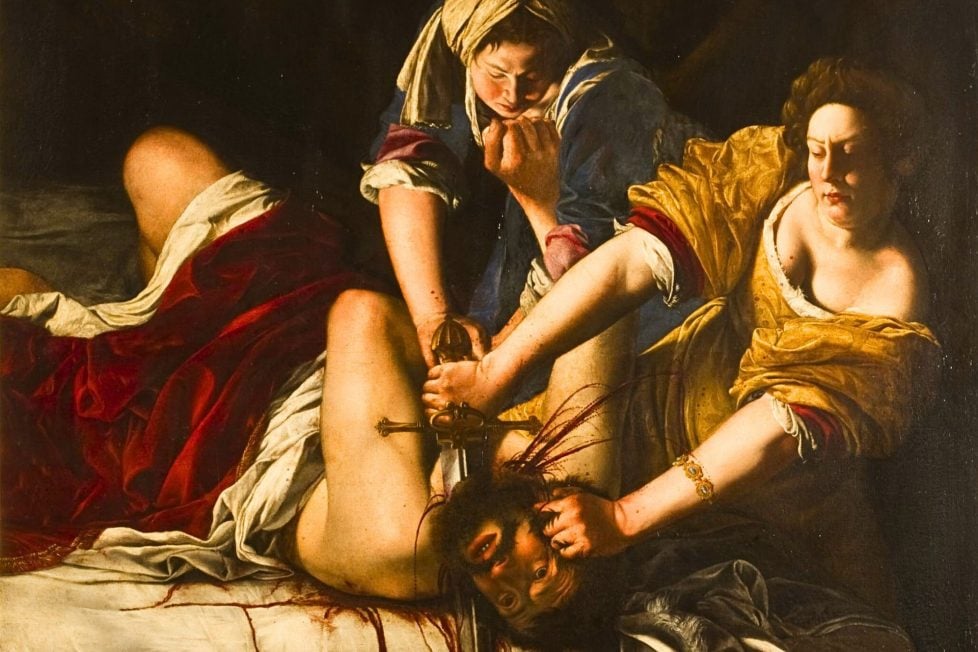
Baroque paintings are a fusion of light interplay, emotional intensity, exquisite detail, and dynamic motion.

Table of Contents
ToggleDuring the 17th century, Baroque became the dominant artistic style of Europe. It came about during a time of great political uncertainty and religious strife, and as an artistic movement it was characterized by dramatic, asymmetrical compositions that featured emotionally impactful scenes illuminated with a stark contrast between light and dark.
Coinciding with the Counter-Reformation movement, Baroque emerged as a style that quickly became associated with the aims of the Catholic Church which hoped to undo the effects of the Protestant Reformation, and regain their former dominance. An evolution from the Renaissance, Baroque took the naturalism and sophisticated sense of perspective developed by Renaissance artists and experimented with light and composition, creating a style that favored theatricality and splendor, which in turn evolved into depicting emotionally impactful scenes. The intensely dramatic and emotional Baroque art served a crucial purpose for Catholic authorities who saw how an emotionally evocative piece of art could trigger a sense of awe and majesty among its viewers. This was then used to create intensely dramatic, dynamic religious artworks that were designed to stimulate piety in viewers.
However, Protestant countries, particularly the Dutch Republic had developed a style of art, strongly influenced by the techniques developed by Italian Baroque artists. Although it was largely separate from the aims of the Counter-Reformation, largely preferring to focus on genre paintings and still lifes.
Baroque Art emerged from the traditions, styles, and techniques developed in the Renaissance period. These had emerged in Italy beginning in the 14th century and were associated with a revival of the learning and artistic styles prevalent throughout the classical period. The Renaissance had brought a sense of realism and perspective to portraiture and its artists such as Michelangelo, Raphael, and Leonardo da Vinci had created works that emphasized the natural world and celebrated the human body in its realistic forms.
By the end of the 16th century, artists began to experiment with new perspectives, adding drama and spectacle and shifting the principal focus away from the natural world. Baroque artists aimed to create scenes of intense emotionality and theatricality, adopting realism in the sense that it could allow the viewer to empathize with the subjects depicted.
Another notable characteristic of Baroque works was a focus on movement often capturing scenes during a moment of action. This was achieved through the compositional technique of using diagonal lines that created a sense of motion and action often highlighting the most important aspect of the scene, thus increasing the emotionality of the scene depicted.
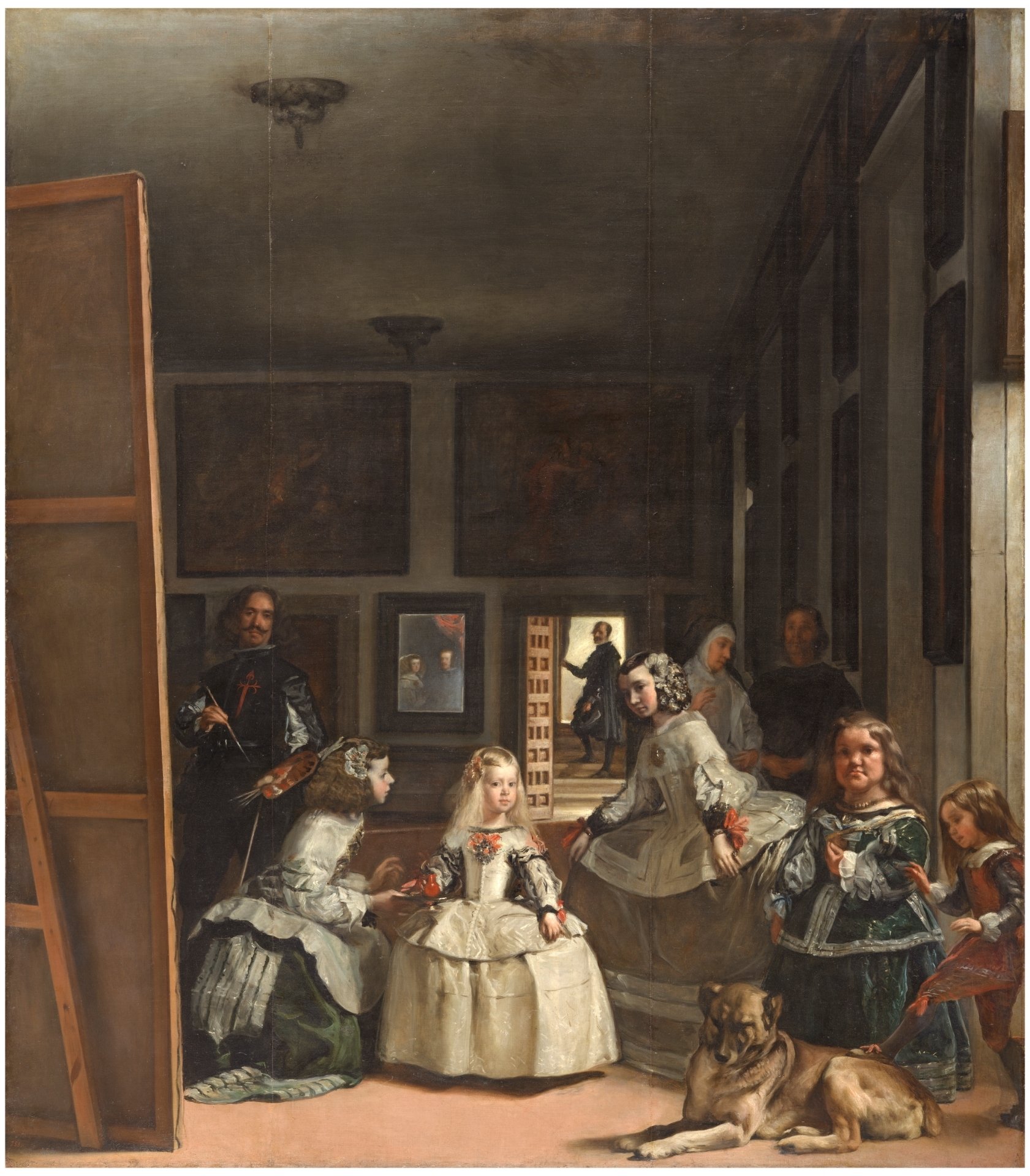
The use of movement can be seen quite prominently in “Las Meninas,” the masterpiece of Spanish Baroque Painter Diego Velasquez. A highly celebrated work of Baroque Art, it features the figures of the Spanish Royal Family and their attendants, with the princess Margarita Theresa as its focus. The work acts similarly to a snapshot, capturing the moment of action where the ladies attend upon the young princess.
The majority of the painting is shrouded in shadow, with an illuminated central focus, which is a technique known as chiaroscuro. This was developed by Italian painter Caravaggio, and is made use of in “Las Meninas” by the strong beam of light illuminating the Princess Margarita Theresa and reflecting upon her ladies in waiting.
The painting’s use of depth coupled with the realism of the characters, creates a scene in which we the viewer feel as though we could walk in and participate. “Las Meninas” is a highly complex painting featuring numerous motifs that make it an extremely visually stimulating work.
Indeed, the dynamic composition encourages the eye to wander throughout the composition to discover the secrets Velasquez has hidden. Directly behind the princess is a mirror featuring the portraits of her parents, the king and queen of Spain, indicating that they are watching the scene from the perspective of the viewer.
To the right is an archway depicting a male attendant, further adding to the sense of depth in the painting. To the left, there is the backing of a canvas showing Velasquez at work, painting at his easel, an increasingly common tactic utilized in Baroque art to show that the artist was a creative force and master of illusion.
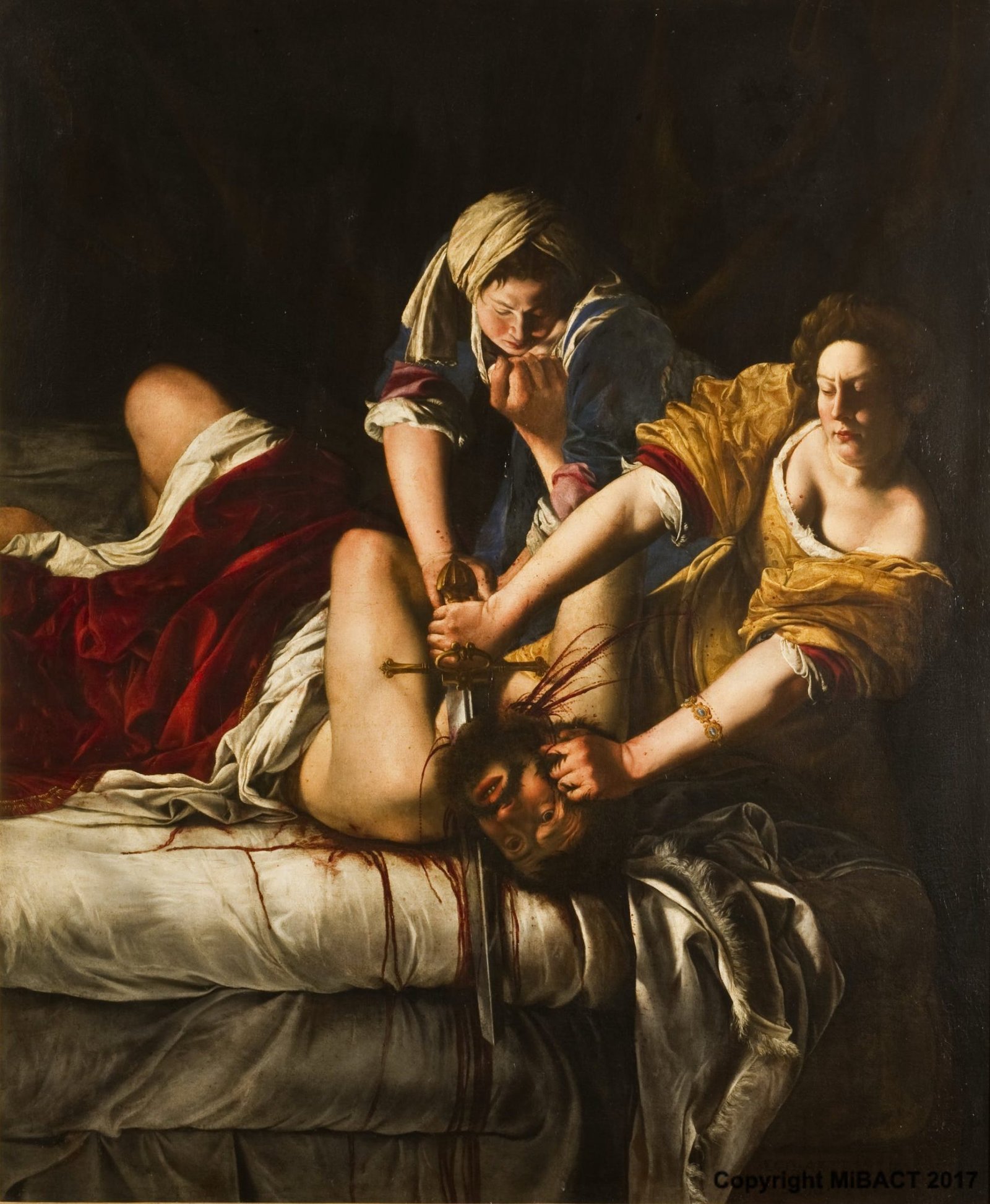
The Baroque period saw an increase in works that aimed to evoke a strong sense of emotion in the viewer through means of visual drama. Chiaroscuro was the favored technique that artists used to achieve this aim. The illuminated parts of the paintings were often the central focus or scene of action, thus creating a strong sense of drama within the painting. This can be seen prominently in Artemisia Gentileschi’s work “Judith Slaying Holofernes.”
Gentileschi uses an abstract composition that depicts the three subjects in a triangular shape, adding a dynamism to the work as the viewer’s eye moves from figure to figure, taking in the particularly violent scene.
“Judith Slaying Holofernes” features the story of a Jewish woman, who saves her city by seducing the Assyrian General Holofernes, who had previously shown interest in her. The scene depicted is following the moment in which Judith gains entrance into the general’s tent and begins decapitating him after he falls asleep drunk. It was a common subject amongst Catholic artists of the Baroque period.
The scene is illuminated by a light emerging from the left side of the painting highlighting the violence of the scene as well as the expressions of the subjects such as Judith’s determined face and Holofernes’s terror. The illuminated scene is a dynamic composition showing Judith dominating the frame and Holofernes’s twisting body resisting her violent advance against him, and this implicit focus on the characters allows Gentileschi to convey the emotional resonance of the story while encouraging empathy for Judith’s Plight.
Perhaps the greatest influence over the Baroque style was the Counter-Reformation. The Counter-Reformation was precipitated by The Council of Trent, which was an ecumenical council of the Catholic Church, held in three parts from 1545-1563. It was held in response to the Protestant Reformation with the aim to remove ambiguity from the church’s response to the doctrinal challenges brought forth by Protestants.
The council became a key influence of the Counter-Reformation and the accusations that had been leveled against the church by Protestants had motivated the Church to put a stop to many of the practices that were seen as corruption.
Thus, by the end of the century the church had regained many of its former followers. The Council of Trent also adopted a propagandist program that was designed to stimulate faith and piety in viewers. Art was to be realistic in the manner of Renaissance painters, with a simplistic and clearer subject and message that was accessible to the average churchgoer. Thus realism coincided with dramatic and illusory effects, making subjects appear relatable to the average 17th century viewer.
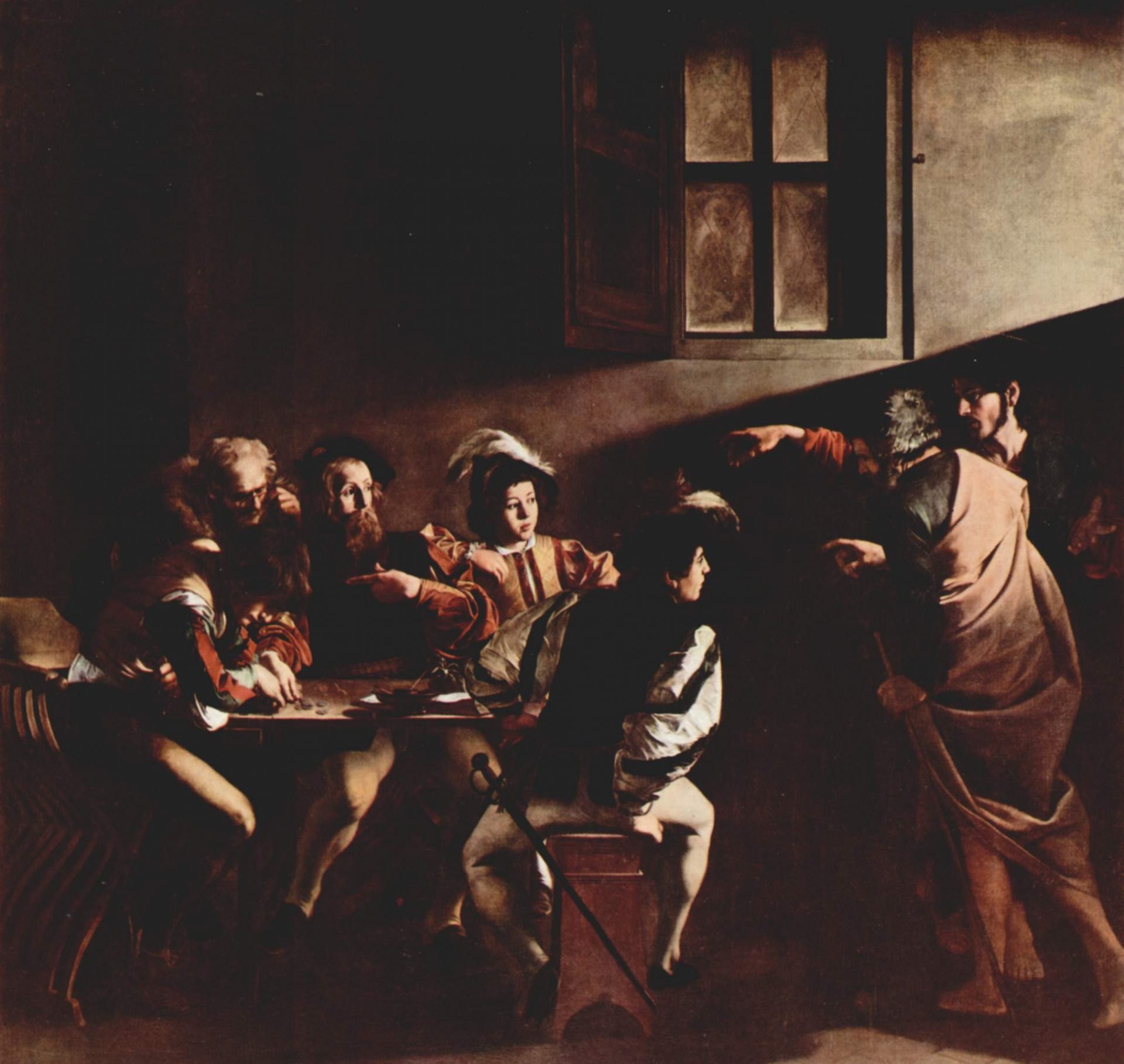
Caravaggio, one of the foremost painters of the Baroque, who was a great influence over succeeding Baroque artists, created many artworks featuring moments of great significance to the Catholic faith. His work “The Calling of St Matthew,” was commissioned to decorate Contarelli Chapel in the Church of San Luigi dei Francesi and was one of many works that chronicled the life of St Matthew. It features the scene where Jesus calls upon Matthew, the Roman Tax Collector, to be one of his disciples.
This artwork features a strong chiaroscuro along with an asymmetric composition, a stark beam of light emanating from the right from a window out of the frame. The light falls upon St Matthew as he is sitting at a table with a group of other men, the light showcases St Matthew as the central figure of the painting while also acting as a visual motif of spiritual awakening and enlightenment, through the acceptance of Christ’s message.
Jesus, depicted to the right of the painting, is pictured pointing at St Matthew with St Peter standing alongside him. The scene takes place in an ordinary setting, with the figures wearing contemporary costumes, designed in such a way as to inspire the 17th century viewer to identify with the spiritual calling of St Matthew, thus encouraging piety.
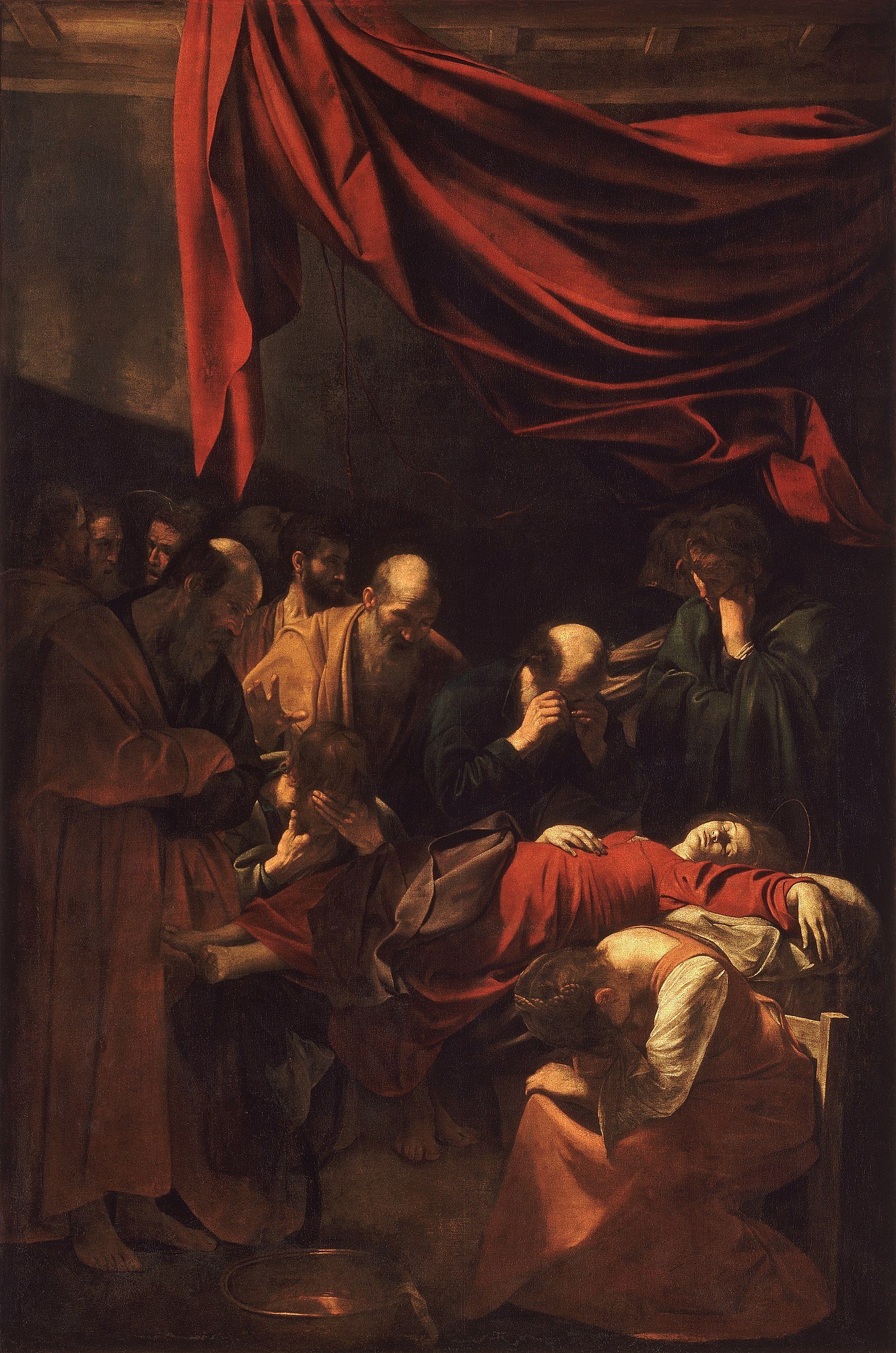
Caravaggio also created the work “The Death of the Virgin,” depicting the moment when the Virgin Mary dies. She is shown in the center of the painting at the moment of death, surrounded by the apostles and Mary Magdalene. The emotional intensity of the piece is characterized by the expressions of the subjects featured, which is highlighted further by the use of chiaroscuro that illuminates Mary’s body and adds dramatic contrast to the features of the bereaved.
It was commissioned for the Carmelite Church of Santa Maria della Scala by a papal legal advisor, but was later bought by the Duke of Mantua as the painting alarmed the friars due to them finding the Virgin’s body too realistic, and that she was modeled on Caravaggio’s mistress.
The painting is extremely solemn and the dramatic reds and greens highlight the sadness of the scene. “The Death of the Virgin” is hyper realistic, and shows no signs of the Virgin Mary’s ascension into Heaven, choosing instead to focus on the emotional impact of loss, a subject familiar to all.
Although Baroque has been traditionally associated with the Counter-Reformation, characteristics of the style made their way to many Protestant countries and influenced their styles during the 17th century. This was perhaps most famously realized in the Netherlands which experienced a great artistic movement throughout the century, now known as the Dutch Golden Age.
While the Italian Baroque movement had focused on crafting scenes of religious significance, featuring highly emotional scenes illuminated with dramatic lighting and chiaroscuro, the artworks produced by Dutch artists had more of a secular focus. Similar to the works of Caravaggio, there was a focus on the ordinary, but the aim was not to create relatability between the viewer and religious figures, it was largely to present scenes of ordinary even middle class life.
Dutch artists such as Rembrandt and Johannes Vermeer, specialized in genre paintings that were often secular and philosophical in nature, encouraging philosophical debate and reflecting the intellectual and cultural atmosphere of the 17th century Netherlands. Indeed, the symbolism behind many of the works of the Dutch Golden Age was far more sophisticated than those of their Catholic counterparts. This was due to the fact that the Council of Trent had decided that works must be clear with their intent, in order to make sure that viewers could understand the religious significance. The artists of the Dutch Golden Age, had no such inclination, even though their techniques were strongly influenced by the Catholic Baroque artists.
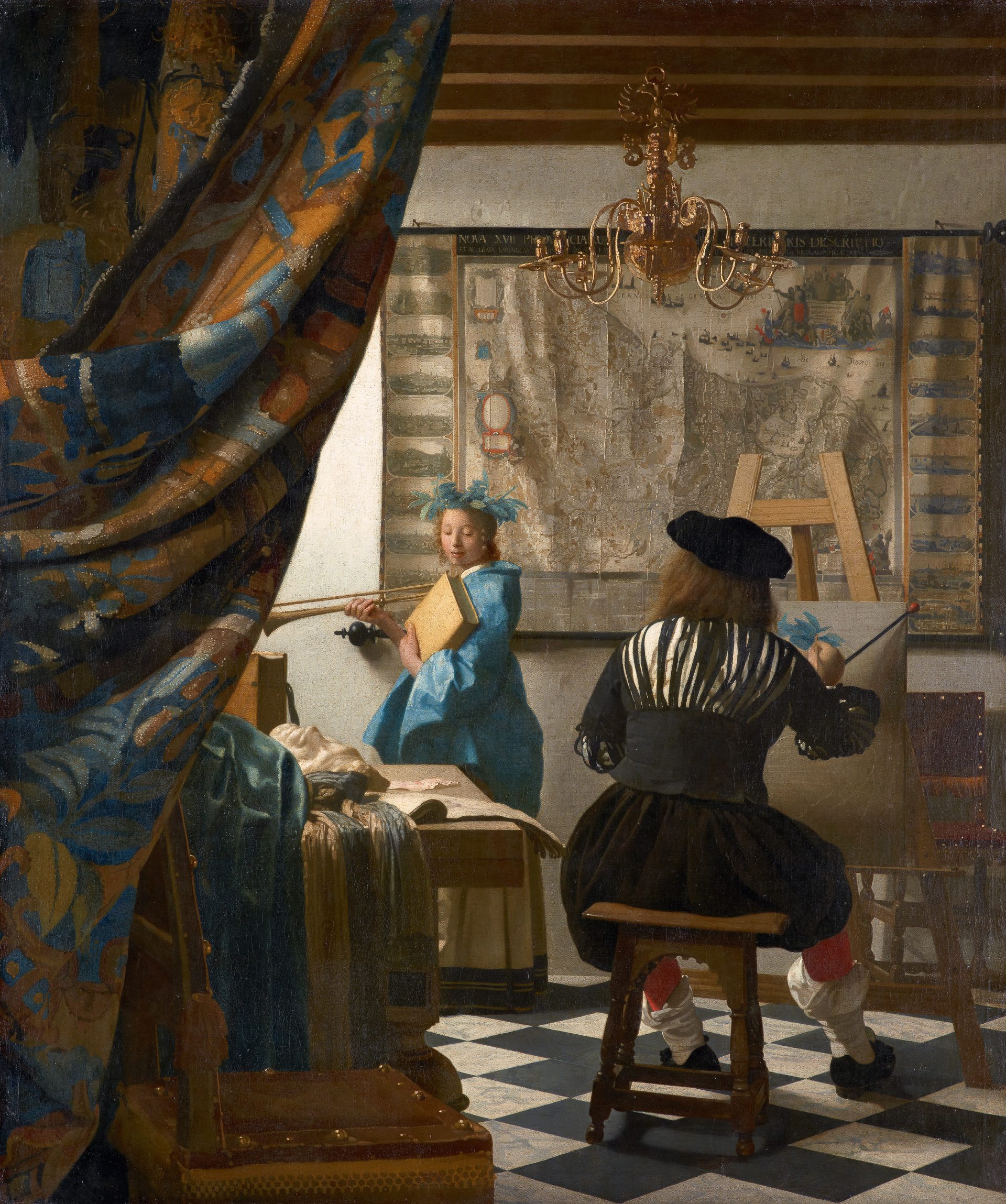
This attitude to painting can be clearly seen in the works of Johannes Vermeer, specifically in his work “The Art of Painting.” This work is quite literally an allegory of the art of painting, and while it appears as a typical genre work, it contains many allusions to classical myth and intellectualism. His model is Clio, the muse of history, and she holds a Book of History while standing in front of a map of the united Netherlands before it was divided. This alludes to the artistic culture of the old Netherlands, referring to its greatness as a cultural force.
Vermeer cleverly uses space and light to create a prominent sense of depth in the Art of Painting that was characteristic of the Baroque. It shows a striking similarity to Las Meninas, as it demonstrates the artist at work, showing again how the painters were considered masters of illusion and creative architects of their masterpieces.
The dominant compositional aspect of the scene is the large curtain shielding part of the space giving the painting a voyeuristic quality, almost inviting us in to gaze upon the scenery. Vermeer also utilizes light and shadow, though not to the same extent as Caravaggio, which gives the work a gentler quality that is rather low on drama and emotion. Highlighting the intellectual attributes of the painting, which ask the viewer to participate not by empathizing with the work, but by pondering upon its meaning.
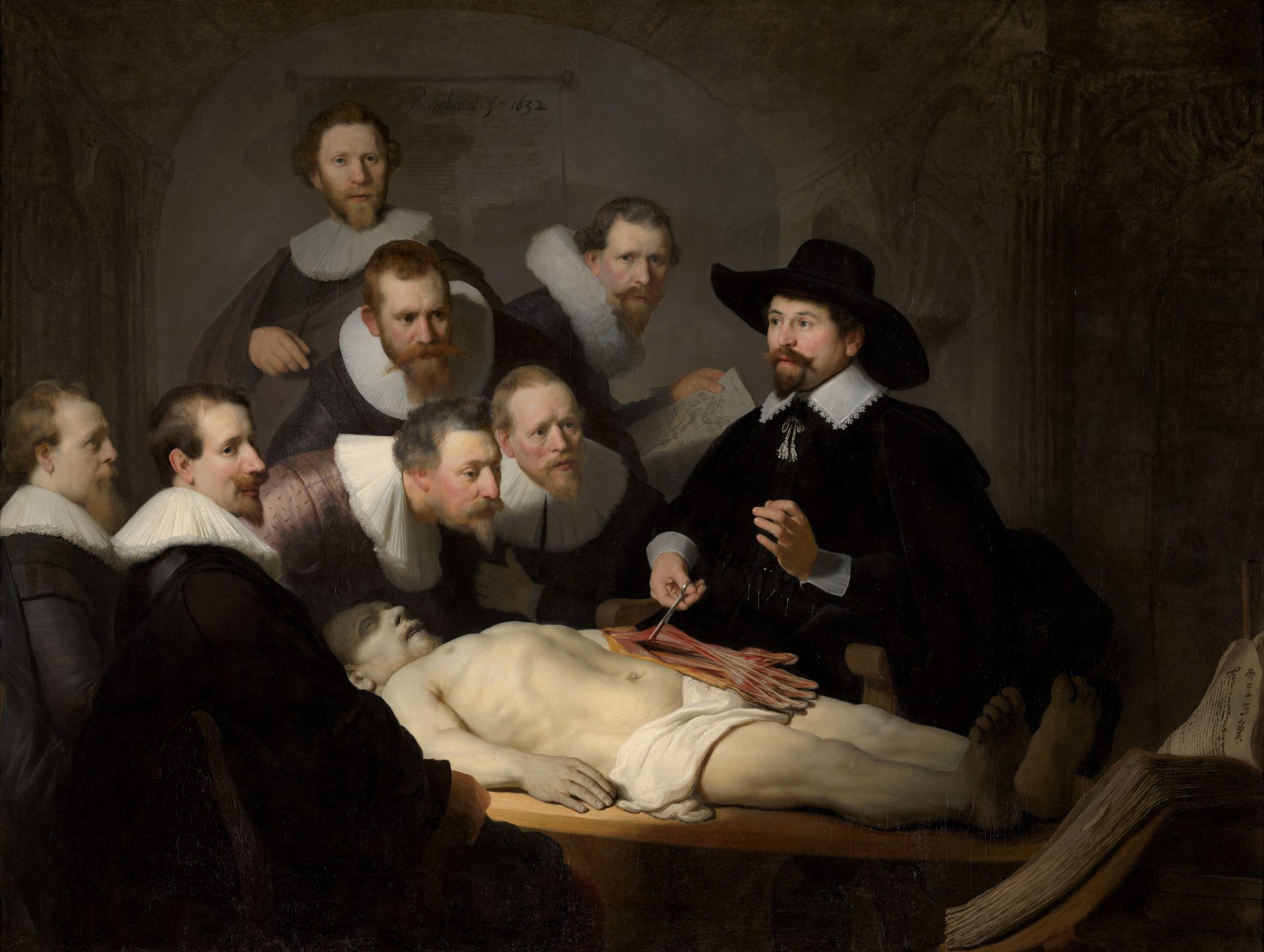
The focus on the intellectual is also seen in the work of Rembrandt, specifically in “The Anatomy Lesson of Dr Nicolaes Tulp.” This was the first time Rembrandt was commissioned to paint the portraits of Amsterdam surgeons, as the Surgeons Guild commissioned portraits every few years to commemorate their most significant Anatomy demonstrations.
Anatomy demonstrations had become a prominent social activity in The Netherlands during this time period, as they were emblematic of the intellectual culture of the Dutch Golden Age. Often held over a number of days during the winter months, spectators would pay a fee to sit and watch an anatomy lecture in which the surgeons would dissect a corpse, starting with the internal organs and finishing with the limbs and head.
In this scene, Dr Nicolaes Tulp is the dominant figure cutting into the corpse, while the other surgeons look on, he is featured wearing the darkest clothing which contrasts with the stark white body of the corpse Aris Kindt, a criminal whose body was given to the surgeons guild after he was hanged. The work shows the part of the lecture in which Dr Nicolaes Tulp dissects the arm of Kindt, capturing the moment of action.
The painting is also characterized by stark chiaroscuro that highlights the expressions of the surgeons and the body of Kindt, suggesting that they are enlightened by their knowledge and intellectualism.
Baroque art coincided with a time of great change and religious upheaval. It was the time of both the Counter-Reformation and the Dutch Golden Age. Two historical periods that were inextricably linked with their respective religions. The techniques pioneered by Baroque artists throughout Europe, allowed for artists to add drama to their works, a technique that was incredibly useful in crafting both emotional resonance and intellectual stimulation.
The Baroque movement emerged at a time where artists were experimenting with the techniques of the Renaissance, allowing for powerful works featuring chiaroscuro, asymmetrical compositions, and dynamic scenes that almost acted as a snapshot of the moment of action, bringing the viewer into these scenes through the use of stark realism. Thus allowing viewers to both empathize with the emotionally dramatic scenes of the Counter-Reformation works and to theorize upon the philosophy brought forth throughout the works of the Dutch Golden Age.
